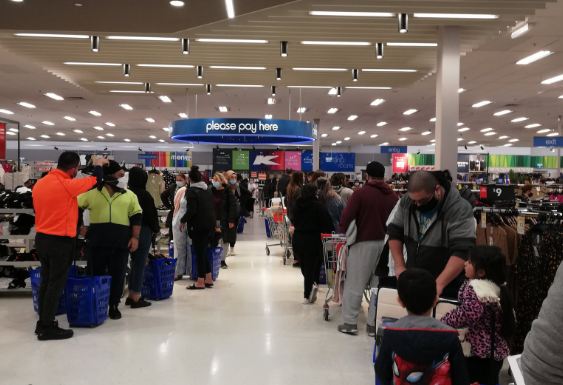The fourth quarter of the year represents a great window of opportunity for marketers to reach their audiences, with Christmas always being huge with consumers and Halloween rapidly increasing in popularity among Aussies. Kmart’s success story from last year shows how they used modern technologies, such as Snapchat’s AR functionality, to appeal to a younger client base.
With these two holidays combined, Q4 presents a key opportunity for retailers to win with consumers, and one of Australia’s biggest retailers Kmart leveraged Snap’s AR in 2021 to reach Gen Zers and millennials with two festive campaigns that achieved ROAS results while offering immersive experiences that blended their audience’s physical world with the digital.
Kmart’s objective of reaching — and engaging with — a younger demographic at scale was made possible with the creation of both a holiday Lens and highly immersive Snap Video Ads as part of their ‘Merry Spookmas’ campaign that combined Snap Ads and Lenses. Snapchatters could even unlock the AR experiences via a Snapcode in Kmart’s retail stores!
Together, the Halloween and Christmas campaigns drove positive results that met Kmart’s goals, achieving $25 ROAS using a seven-day swipe and one-day attribution window. The creative used for each campaign played a key role in allowing Kmart to remain competitive during a critical time for retailers.
The Halloween campaign Lens achieved more than 54-second average camera playtime when unlocked via the Snapcode, while the Christmas campaign achieved a +7pts lift in brand association.
Christmas is the number one sales moment of the year, but as data shows, Halloween is an American imported holiday ramping up in popularity. In fact, one in three Australians take part in Halloween, jumping to one in two amongst younger 18-34 year-old consumers.
Charlotte Gergely, member of Kmart’s Christmas campaign brand team, said: “Driving interaction and engagement via the Snapchat app for our Christmas campaign proved effective at reaching new and younger audiences, while providing an ‘experience’ through the interactive filters aligned to our Christmas creative.”
As this story from Kmart shows, in an increasingly cluttered market, retailers who maintain an emotional connection with consumers and invest in bridging the gap between the in store experience and the online experience will see sustained success in consumer engagement, online and offline. Increasingly, Augmented Reality (AR) is helping brands bridge that gap by encouraging brand play and affinity, while driving brand association and ROAS results.
Last April, Snap released their 2022 Gen Z Report, which was conducted across 16 countries, and included 1,000 Australians. The research uncovers what’s at the heart of the Snapchat Generation and their attitude towards culture, brands, technology and community. For this audience, these are the most important elements:
- Visual communication lies at the heart of digital interaction. Gen Z is redefining communication, expressing themselves in more creative and immersive ways to deepen connections with others. The report found the majority (89 percent) of Gen Z have used some form of visual communication when messaging friends. As the real-life and digital worlds continue to coalesce, communicating visually through the camera lies at the heart of Gen Z and the way they communicate online.
- Brand connection key to online success. After years of limited social interaction, Gen Z is craving connection – from their peers, and from the brands they love. Almost half (43 percent) of Gen Z feel it’s more important for brands to build connections with them post-pandemic. Over half (54 percent) say using AR lenses/filters helps them feel more connected to brands. The research suggests brands who can create a personal connection online are those who will win the hearts and minds of Gen Z.
- AR shopping is here to stay. Gen Z is trailblazing when it comes to using AR for shopping, and this trend will continue post-pandemic. The findings reveal 88 percent of Gen Z are interested in using AR to shop, and 79 percent are interested in using AR to try on makeup and clothes. Gen Z is driving a shift toward more immersive and social shopping experiences made possible by AR, and nearly two thirds (59 percent) say AR is going to make life easier.
- Positivity reins supreme. Gen Z is actively seeking out and building positive spaces to escape from the pressures of expectation. In fact, two thirds (64 percent) say they focus on using apps that feel like positive environments. Brands should focus on how to complement the spaces Gen Z are creating spaces of positivity and individuality.
These are the things that all brands need to keep in mind as they venture into the world of digital advertising. The opportunities for success are boundless, as long as you go about it the right way, as proven by Kmart’s example.








